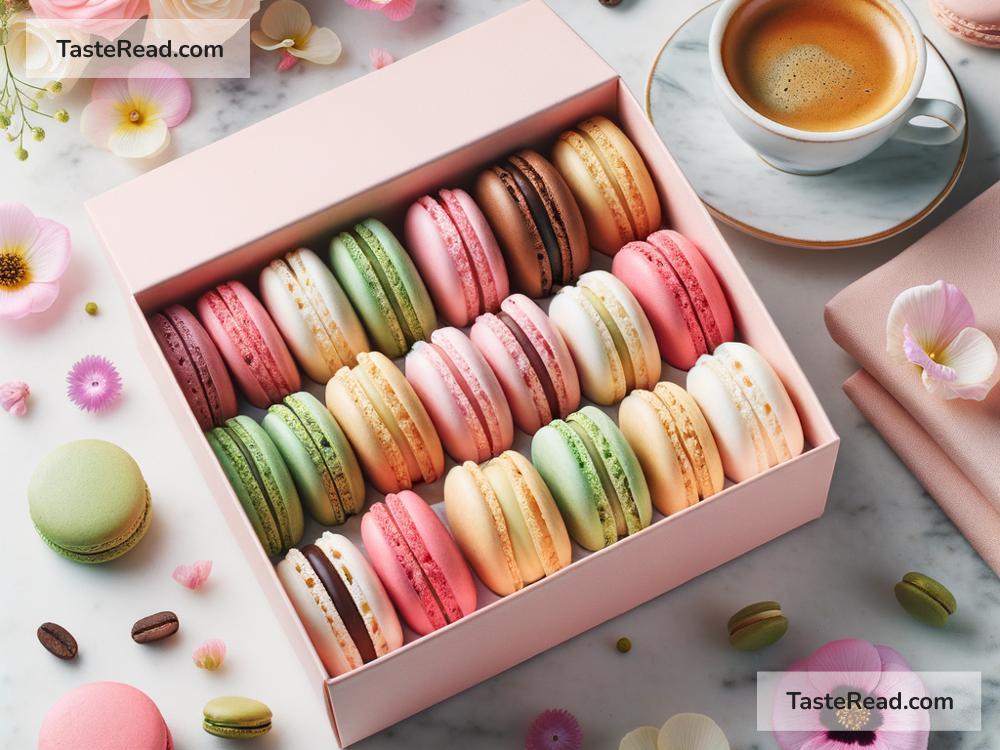Indulging in the Fine Craft of French Macaron Pastries
French macarons are small yet mighty confections known for their delicate texture, vibrant colors, and delectable flavors. These bite-sized treats are more than just cookies; they are works of culinary art that have captured the hearts of dessert lovers worldwide. If you’ve ever marveled at the elegance of macarons or wondered how they’re made, dive into this blog and discover the delightful world of French macarons.
What Are French Macarons?
French macarons are almond-based pastries made from just a few simple ingredients: almond flour, powdered sugar, granulated sugar, egg whites, and food coloring. They consist of two crispy yet chewy shells sandwiched together with a creamy filling. The filling can range from ganache and buttercream to fruit preserves, offering endless possibilities for flavors.
What makes macarons so special is their texture. When you take a bite, you’ll notice the shell is slightly crisp, but as you chew, it melts into a soft, chewy center. Pair that with a rich filling, and you have a heavenly dessert experience.
A Brief History of Macarons
Macarons may be known as a quintessential French treat, but their origins trace back to Italy. The word “macaron” comes from the Italian word “maccherone,” which refers to paste. The macaron was first introduced to France in the 16th century when Catherine de’ Medici, the Italian wife of King Henry II, brought the recipe with her.
For many years, macarons were simple almond cookies, but in the 20th century, French pâtissier Pierre Desfontaines revolutionized the macaron by transforming it into the sandwich-style treat we know today. He paired two almond shells together with a filling, creating the modern-day French macaron that has become iconic.
Why Macarons Are So Popular
French macarons are beloved for their beauty and versatility. Their smooth, shiny shells and pastel colors make them almost too pretty to eat. They’re a favorite choice for weddings, birthdays, and celebrations because they can be customized to match any theme or color scheme.
But macarons aren’t just visually stunning—they’re packed with flavor. There’s a macaron for every palate, from classic flavors like vanilla and chocolate to more adventurous combinations like lavender, salted caramel, or pistachio. Many bakeries even offer seasonal flavors, such as pumpkin spice in the fall or fruity blends in the summer.
Another reason macarons are popular is that they feel indulgent without being overwhelming. They’re perfectly portioned, so you can enjoy one or two without feeling guilty.
The Art of Making Macarons
Making macarons is a delicate process that requires patience, precision, and practice. Even experienced bakers sometimes struggle with these tricky pastries, but don’t let that deter you! Part of what makes macarons so alluring is the craftsmanship behind every single one.
Ingredients and Preparation
To begin, sift almond flour and powdered sugar together to create a fine, lump-free mixture. This step is key to achieving the smooth texture of the macaron shells. Separately, whip egg whites into stiff peaks while gradually adding granulated sugar. This creates the meringue base that gives macarons their signature structure.
The next step—known as macaronage—is where the artistry comes in. Carefully fold the almond mixture into the meringue until it reaches the right consistency. The batter should be smooth and glossy, with a flow that’s neither too stiff nor too runny.
Piping and Baking
Pipe the batter into small circles on parchment-lined baking sheets, leaving space for the macarons to spread slightly. Before putting them in the oven, let the piped batter rest for about 30 minutes to form a thin “skin” on top. This helps create the iconic smooth surface and chewy texture of the shells.
Bake the shells at the perfect temperature—typically around 300°F (150°C)—and watch as they develop their iconic “feet,” the ruffled edges that form at the base.
Filling and Assembly
Once the shells have cooled, they’re ready to be filled. Use a piping bag to add your chosen filling to one shell, then gently press another shell on top to create the sandwich. Let the assembled macarons rest in the fridge for a day to allow the flavors to meld and the textures to become perfect.
Appreciate the Craft
While it’s easy to admire macarons on display, appreciating the love and skill that goes into making them brings a new level of enjoyment. Skilled bakers dedicate years to perfecting their macaron recipes and techniques, ensuring that every bite is flawless.
If you’ve never tried making macarons, whether it’s at home or through a baking class, it can be a fun and rewarding experience! The process might be challenging, but the satisfaction of successfully creating your own batch is well worth the effort.
Savor the Moment
French macarons aren’t just pastries—they’re moments of joy. Whether enjoyed with a cup of coffee, gifted to a loved one, or savored during special celebrations, macarons elevate ordinary moments into something extraordinary.
The next time you see a display of colorful macarons, take a moment to choose a flavor that intrigues you. Bite into the crisp shell, feel the creamy filling on your tongue, and enjoy the perfect balance of texture and taste. You’re not just eating a dessert; you’re savoring a masterpiece of French culinary artistry.
So go ahead—indulge in the fine craft of French macarons and embrace the sweet charm they offer. Bon appétit!


